Abstract
The key pecking of pigeons maintained on a variable-interval schedule of food reinforcement was suppressed during occasional presentations of a warning stimulus paired with electric shock. On alternate sessions, a co-actor pigeon was visible in an adjoining chamber where it emitted the same food-reinforced key peck during the warning stimulus that signalled shock for the subject. With no shock and at low shock intensities, where the subject's responding was not suppressed or suppressed only slightly, the co-actor had little effect. At the higher shock intensities, where the subject's responding was reduced by at least 40%, the response rate during the warning stimulus was consistently higher when the co-actor was present. One explanation of these results assumes a special relationship between social stimuli and aversive stimuli in which the presence of another animal reduces emotional reactions and thereby allows operant responses to increase. This was not the case here because the mere presence of the co-actor did not maintain social facilitation. Rather, the present results, taken in conjunction with previous findings, suggest that changes in social and non-social variables which affect the rate of food-reinforced responding may produce proportionately larger changes in responding when that responding is suppressed by aversive stimulation than when it is not.
Full text
PDF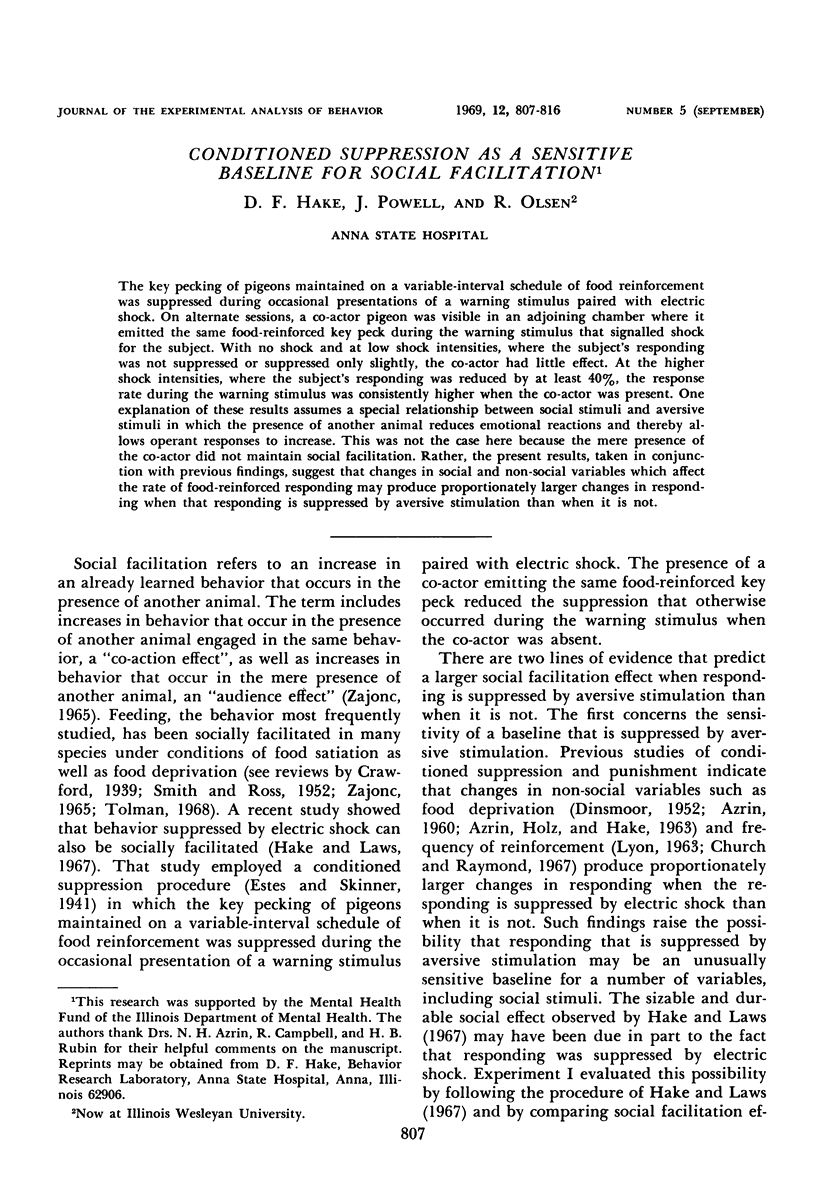
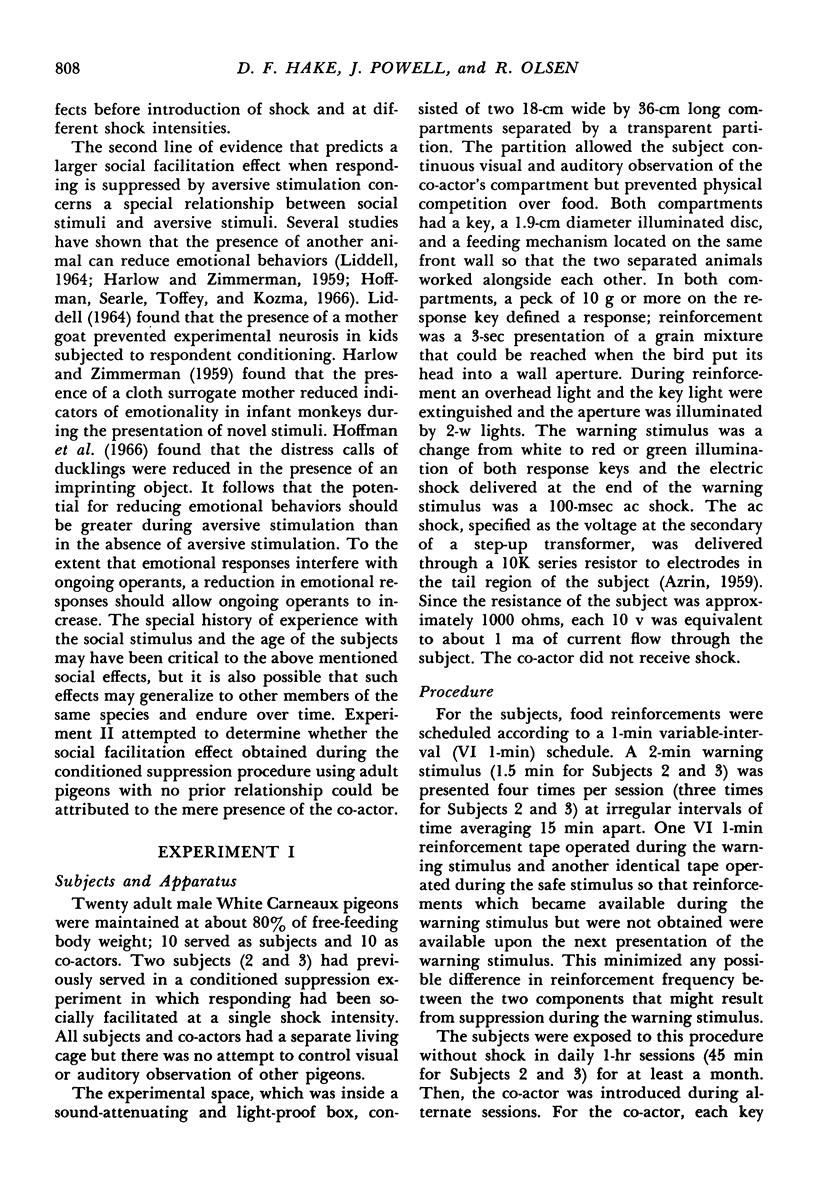
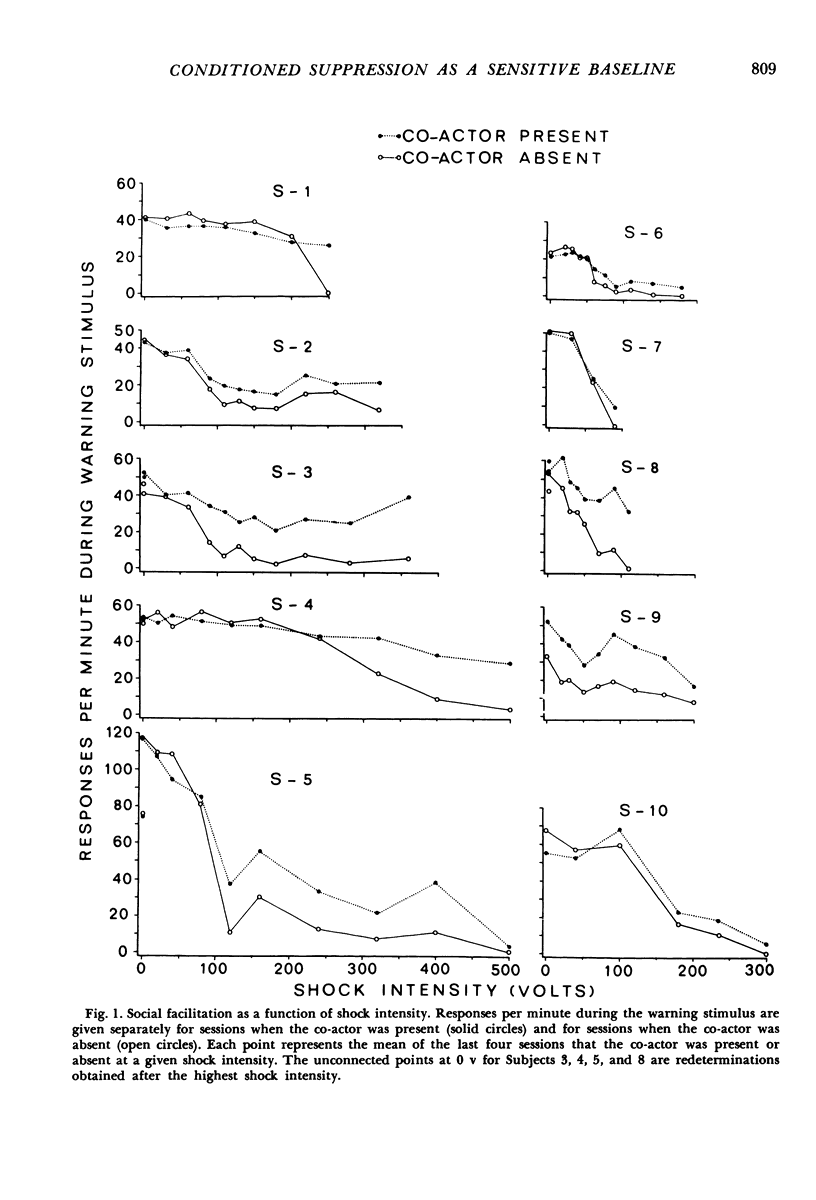
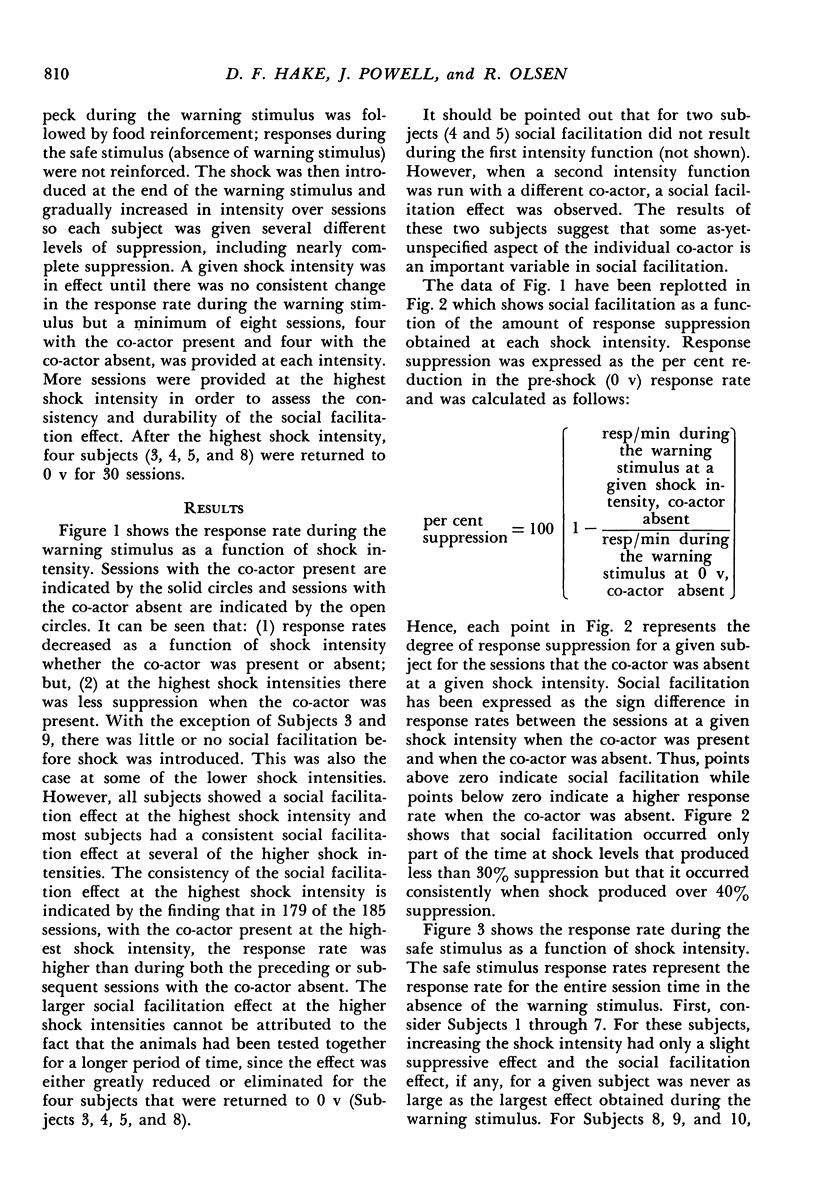


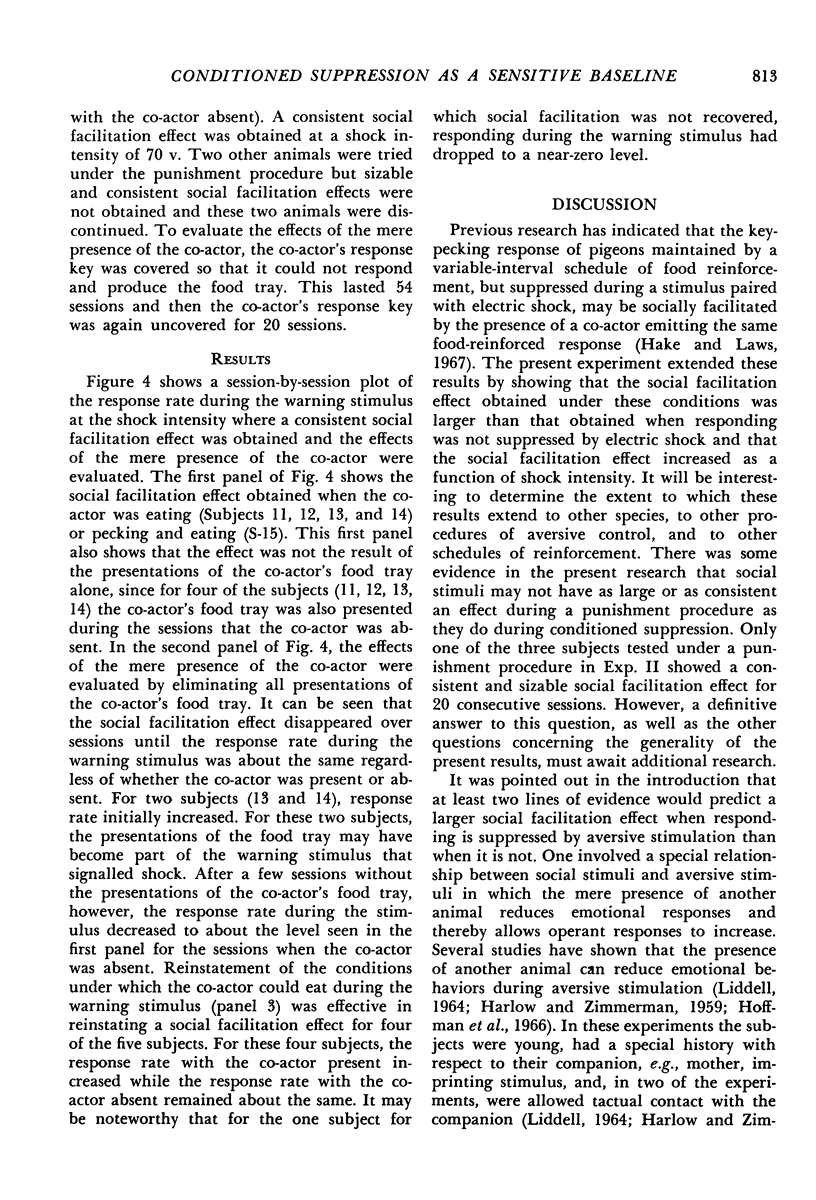
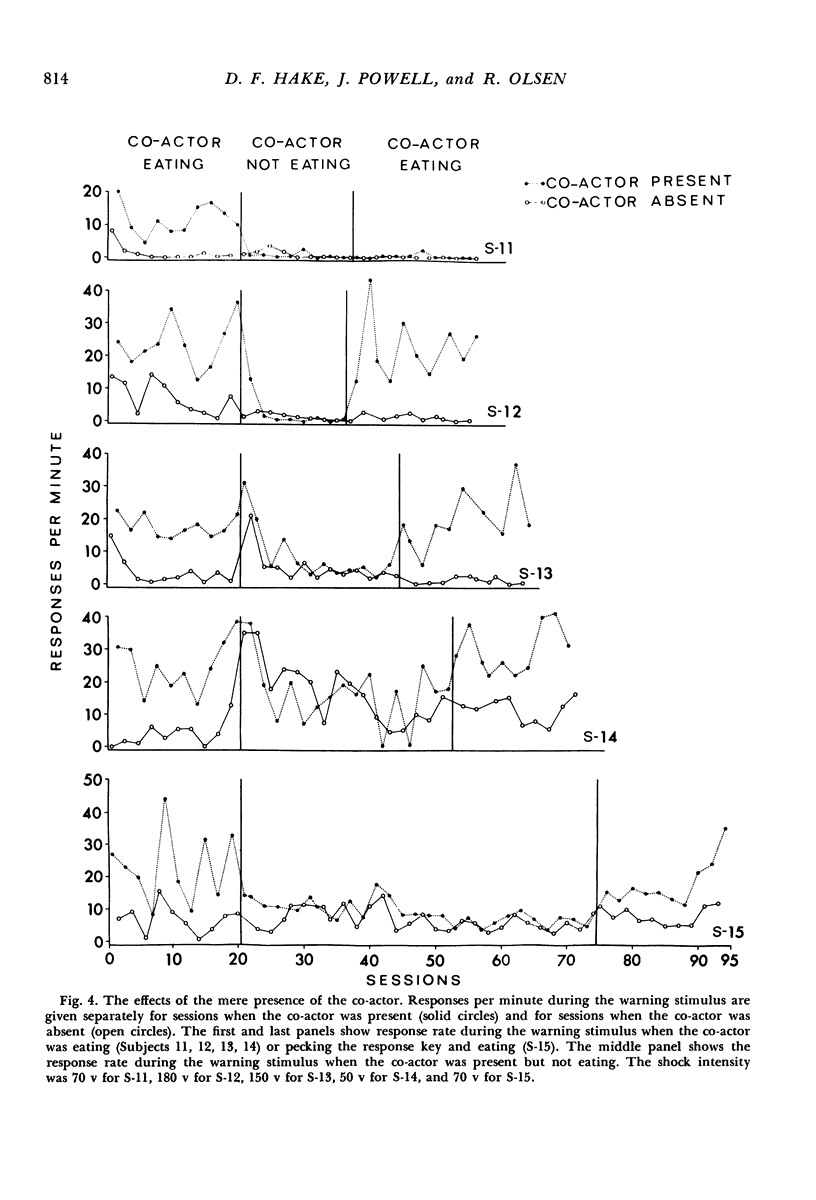
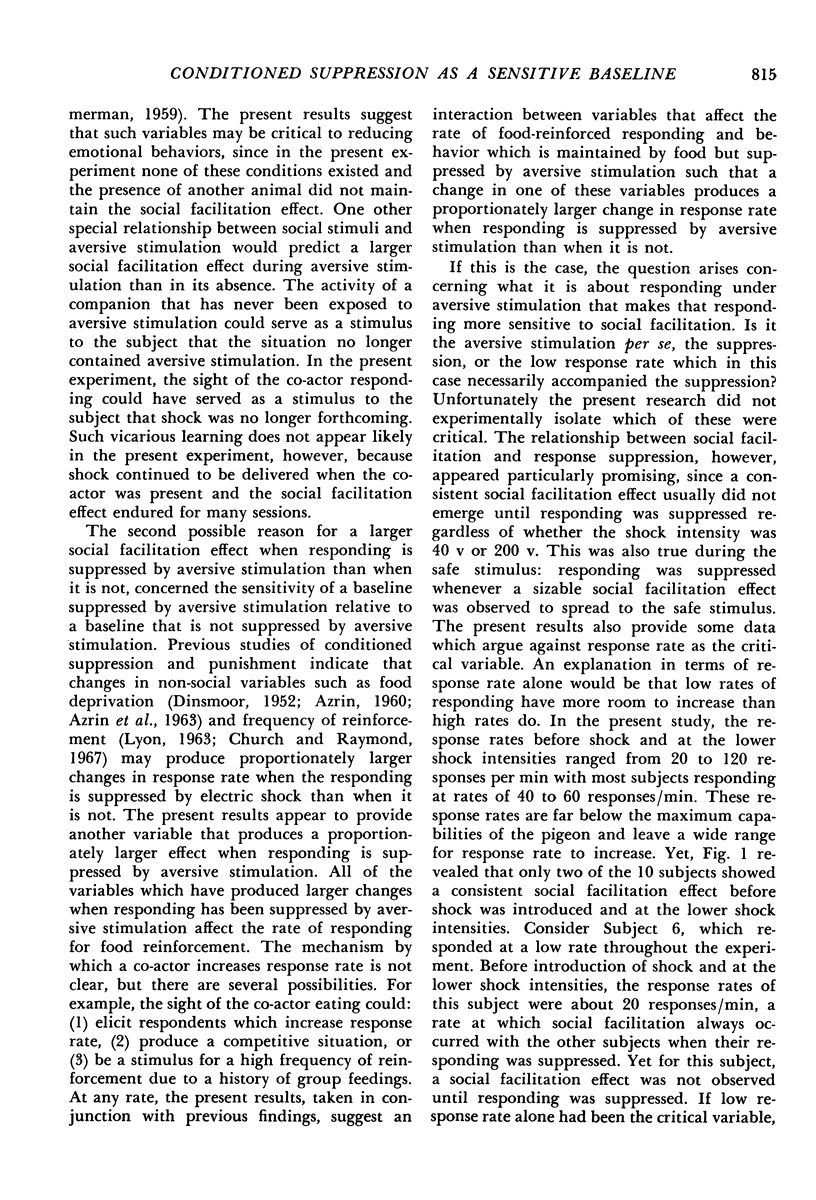
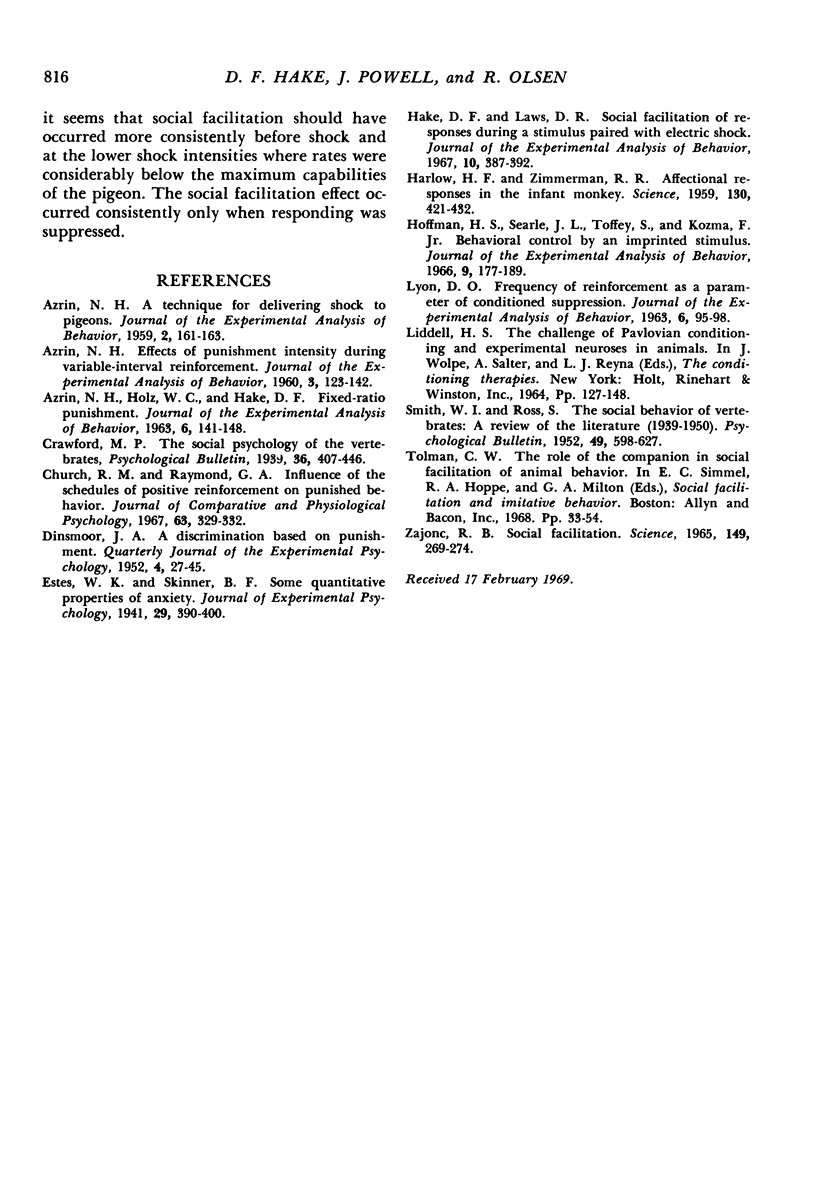
Selected References
These references are in PubMed. This may not be the complete list of references from this article.
- AZRIN N. H. A technique for delivering shock to pigeons. J Exp Anal Behav. 1959 Apr;2:161–163. doi: 10.1901/jeab.1959.2-161. [DOI] [PMC free article] [PubMed] [Google Scholar]
- AZRIN N. H. Effects of punishment intensity during variable-interval reinforcement. J Exp Anal Behav. 1960 Apr;3:123–142. doi: 10.1901/jeab.1960.3-123. [DOI] [PMC free article] [PubMed] [Google Scholar]
- AZRIN N. H., HOLZ W. C., HAKE D. F. Fixed-ratio punishment. J Exp Anal Behav. 1963 Apr;6:141–148. doi: 10.1901/jeab.1963.6-141. [DOI] [PMC free article] [PubMed] [Google Scholar]
- Church R. M., Raymond G. A. Influence of the schedule of positive reinforcement on punished behavior. J Comp Physiol Psychol. 1967 Apr;63(2):329–332. doi: 10.1037/h0024382. [DOI] [PubMed] [Google Scholar]
- HARLOW H. F., ZIMMERMANN R. R. Affectional responses in the infant monkey; orphaned baby monkeys develop a strong and persistent attachment to inanimate surrogate mothers. Science. 1959 Aug 21;130(3373):421–432. doi: 10.1126/science.130.3373.421. [DOI] [PubMed] [Google Scholar]
- Hake D. F., Laws D. R. Social facilitation of responses during a stimulus paired with electric shock. J Exp Anal Behav. 1967 Jul;10(4):387–392. doi: 10.1901/jeab.1967.10-387. [DOI] [PMC free article] [PubMed] [Google Scholar]
- Hoffman H. S., Searle J. L., Toffey S., Kozma F. Behavioral control by an imprinted stimulus. J Exp Anal Behav. 1966 May;9(3):177–189. doi: 10.1901/jeab.1966.9-177. [DOI] [PMC free article] [PubMed] [Google Scholar]
- LYON D. O. Frequency of reinforcement as a parameter of conditioned suppression. J Exp Anal Behav. 1963 Jan;6:95–98. doi: 10.1901/jeab.1963.6-95. [DOI] [PMC free article] [PubMed] [Google Scholar]
- SMITH W. I., ROSS S. The social behavior of vertebrates; a review of the literature (1939-1950). Psychol Bull. 1952 Nov;49(6):598–627. doi: 10.1037/h0061171. [DOI] [PubMed] [Google Scholar]
- ZAJONC R. B. SOCIAL FACILITATION. Science. 1965 Jul 16;149(3681):269–274. doi: 10.1126/science.149.3681.269. [DOI] [PubMed] [Google Scholar]


